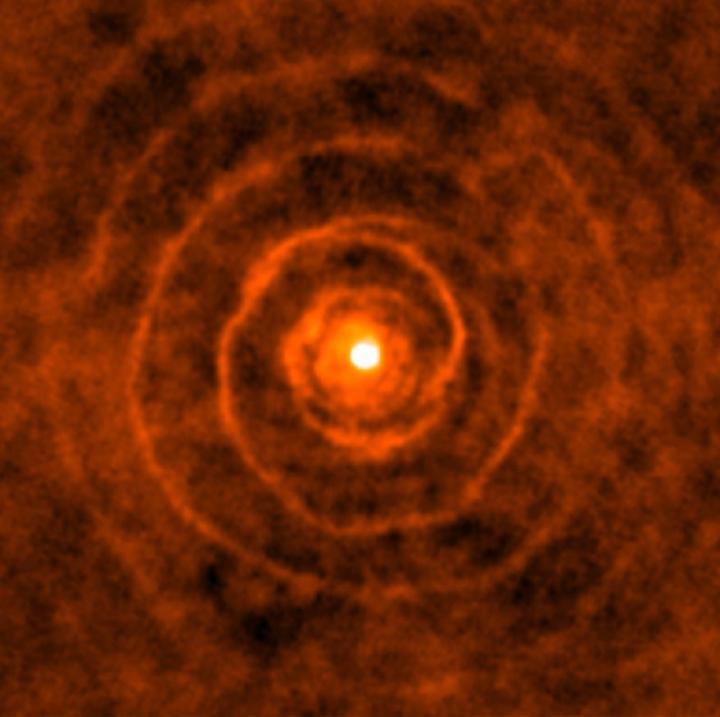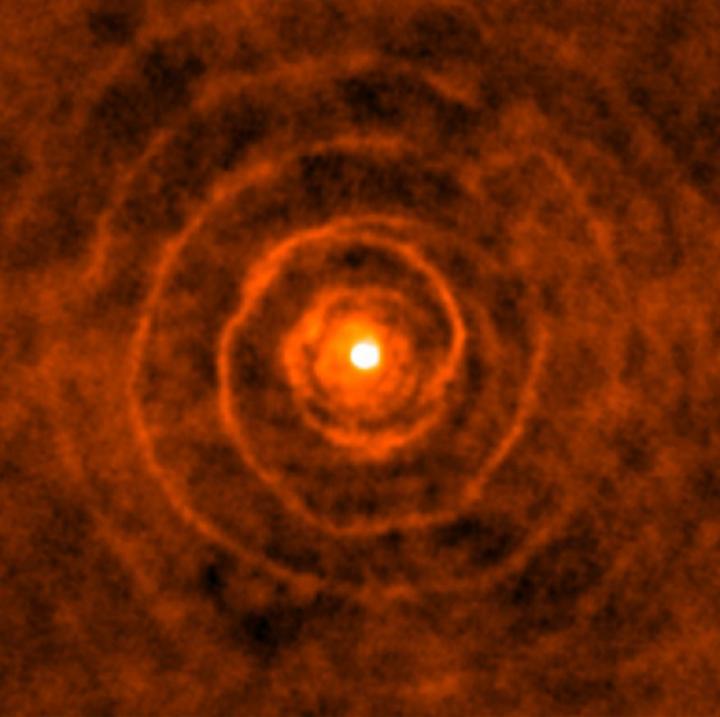
Credit: ALMA, Hyosun Kim
An international team of astronomers has observed a striking spiral pattern in the gas surrounding a red giant star named LL Pegasi and its companion star 3,400 light-years from Earth, using a powerful telescope in northern Chile called Atacama Large Millimeter/submillimeter Array, or ALMA.
"What we are seeing in splendid detail with these observations is the final act of a dying red giant star, as it sheds most of its gaseous bulk in a strong, outflowing wind," said study co-author Mark Morris, UCLA professor of physics and astronomy.
After comparing their telescopic observations with computer simulations, the astronomers concluded that a highly elliptical orbit is responsible for the shape of the gaseous emissions surrounding this system.
The research appears in the journal Nature Astronomy and is the cover story of the March issue.
"Because of the orbital motion of the mass-losing red giant, the cold molecular gas constituting the wind from that star is being spun out like the sprays of water from a rotating garden sprinkler, forming the outflowing pattern of spiral shells," Morris said.
ALMA, a powerful international facility operated cooperatively by many countries around the world including the United States, measures extremely short wavelength radio emission. Using this unique instrument, the scientists were able to create a three-dimensional image of the emission from molecules ejected from LL Pegasi and which then form a spiral pattern caused by the presence of the orbiting companion star.
The images, which show many complete revolutions of the spiral pattern, offer clues about the dynamics of the binary system over a period of 5,000 years.
"This unusually ordered system opens the door to understanding how the orbits of such systems evolve with time as one of the stars loses most of its mass," Morris said.
###
Hyosun Kim of Taiwan's Academia Sinica Institute of Astronomy and Astrophysics led the research team.
View video animations illustrating this research:
- 3-D visualization of LL Pegasi, starting from a Hubble Space Telescope image
- Molecular gas emission from LL Pegasi
Media Contact
Stuart Wolpert
[email protected]
310-206-0511
@uclanewsroom
http://www.newsroom.ucla.edu
############
Story Source: Materials provided by Scienmag





